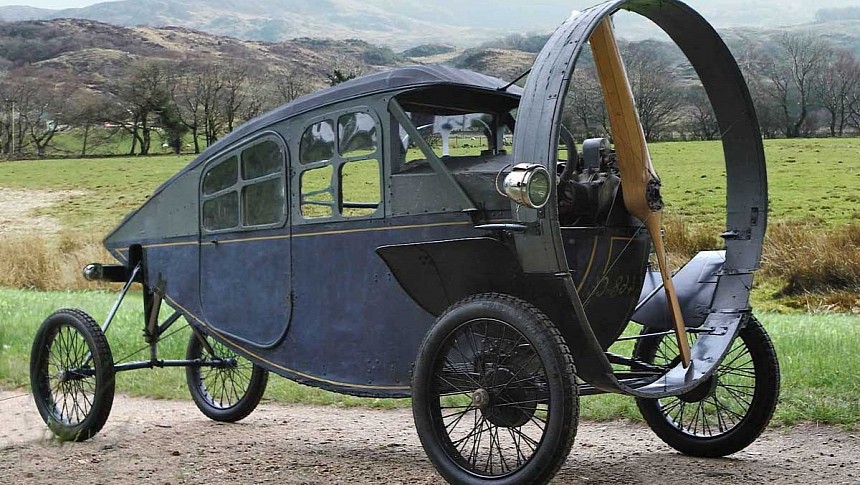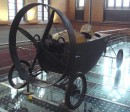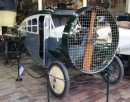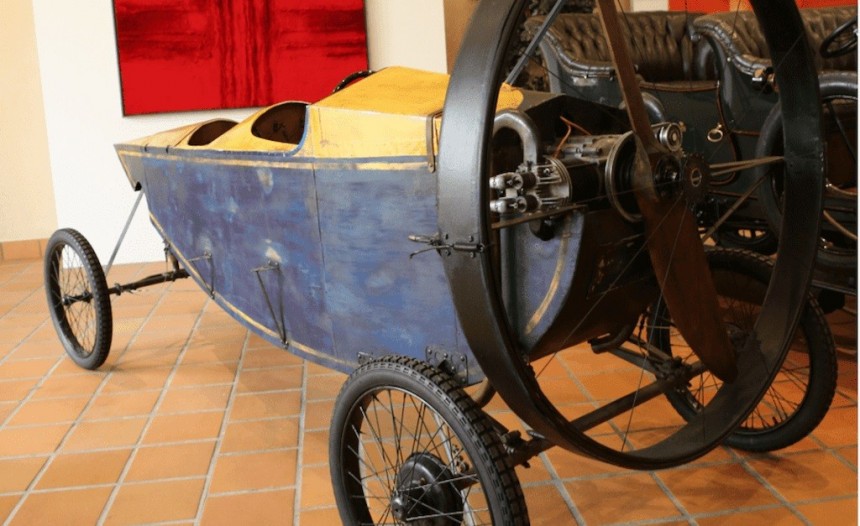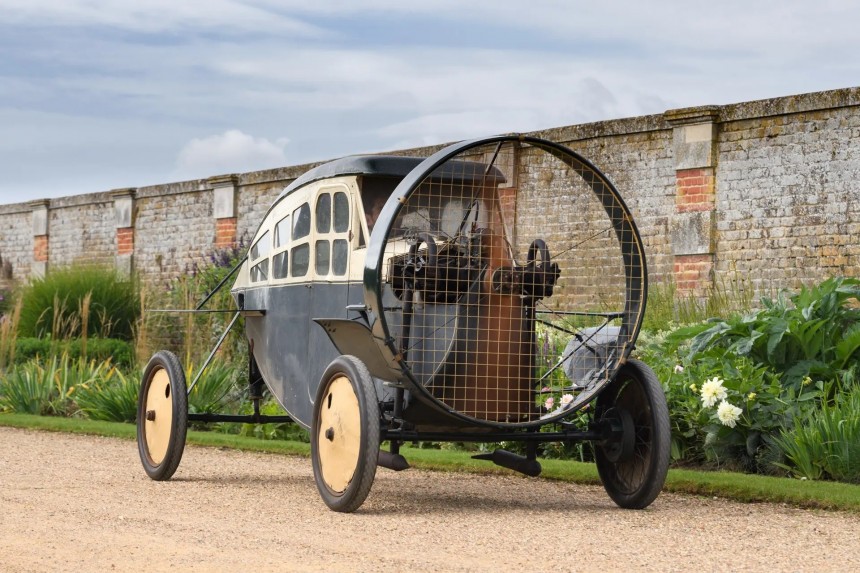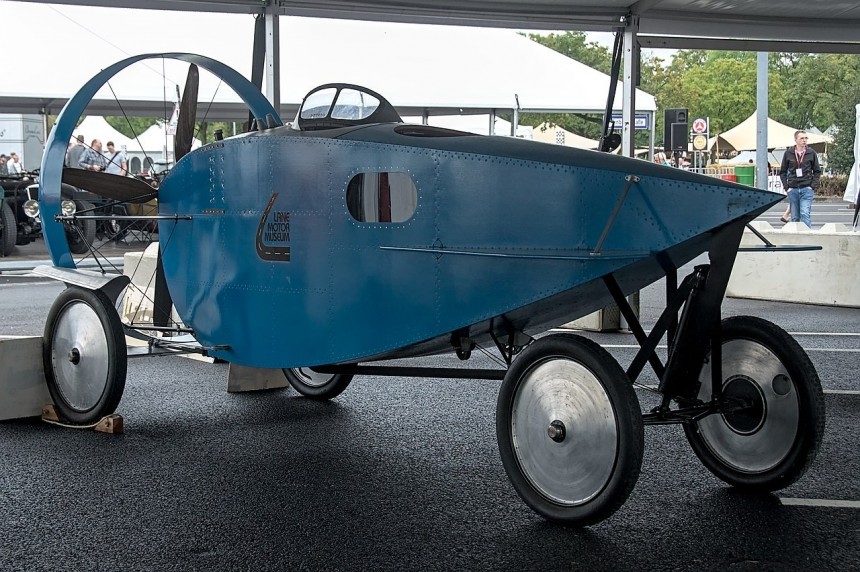At the beginning of the 20th century, the automotive world was still in its early years, and car designers and engineers were overflowing with ideas. Moreover, engineers of that era often took inspiration from the advancements in aeronautics and tried to implement innovations from that field in their automotive projects as well.
In 1909, Marcel Leyat, a French engineer, inventor, and biplane designer, had dreams of building an aircraft but didn't have enough funds to bring such a project to fruition, so instead, he tried his hand at automotive design. The result was a plane without wings called the Helica (the French word for propeller).
Marcel Leyat was deeply immersed in the world of airplane design and thought the automotive industry could learn a thing or two from aviation. Actually, back in that period, the aviation and car worlds were inextricably intertwined, with engineering developments in aeronautics often previewing similar advancements in automobiles and vice versa.
Nonetheless, Leyat believed cars were way too heavy due to their complex drivetrain and not aerodynamic enough. He saw transmissions, clutches, drive shafts, and differentials as unnecessary components that only added weight to an automobile. The French aircraft designer thought that fitting a car with a propeller would be a good idea that would solve those woes.
Planes were designed to be lightweight and aerodynamic from the get-go, so he took inspiration from the aviation world to simplify car design for enhanced reliability and efficiency. He ended up designing a very light automobile equipped with a large propeller powered by a small 18 hp (13.2 kW) engine.
The Helica was essentially thought out as a wingless airplane for the road. Its body was made entirely of plywood, which made it very light and quite fuel-efficient. It only weighed 225 kilograms (550 pounds) and got 48 miles per gallon (20.4 km per liter).
The French designer also curved the panels to reduce wind resistance and minimize drag. The wheels are designed as aluminum discs with integrated brakes to further reduce weight. Inside, a snug cabin has the driver and passenger sitting behind each other as in an aircraft.
The vehicle looked right out of a comic book, but it was innovative for its time. Leyat understood that automobiles (those from his era) lost significant power in the transmission and differential, so as mentioned, it was not an engine that was turning the wheels but a huge two-bladed wooden propeller attached to the front of the car directly on the 1200 cc two-cylinder engine's drive shaft. The car's steering was pretty rudimentary, to say the least. It was performed via wires connected to the rear wheels.
Its lightweight, streamlined body made the vehicle dangerously fast. In its time, it could reach 110 kph (68 mph), making it an exciting but terrifyingly fast machine to travel in.
However impressive its performance was under the right conditions, the Helica had its flaws. First off, that wooden propeller spinning just a few inches from the driver was quite dangerous. It's not hard to imagine what could happen in the event of a front-end collision. Besides the safety hazard it posed, the propeller obstructed the driver's view and constantly blew wind over the passengers.
Leyat tried to solve these issues with various design changes in subsequent Helica models. He built a cockpit for the passenger compartment to protect the driver and passenger from the weather and the propeller itself, which was also encased in a cage. These changes made the vehicle look just like a wingless airplane. Nonetheless, the unusual driving mode (the driver had to get out to start the car by pulling a cord and then quickly jump into the cockpit before it went off on its own), the inconveniences regarding the noise and the dust, along with the safety concerns led to the car's limited success as a means of regular transportation..
The Leycat Helica made its first public appearance at the 1921 Paris Motor Show and was produced between 1919 and 1925. During all these years, only 30 units were actually built. Production was quite tricky due to a lack of funds.
After its debut, the design is said to have elicited a lot of interest from the public, with reports claiming Leyat received orders for 600 units at the Paris Motor Show. In reality, only 23 of the 30 Helicas that were ever made were reportedly sold. Nowadays, just four Helica units are known to survive, and one of them is part of the Prince of Monaco's private car collection.
Though the design never really picked up, the Leyat Helica brought a fresh perspective on car design and inspired research into automotive aerodynamics. And we're not talking just about the engine here because Leyat saw the larger picture and improved the entire car, reducing its weight and drag.
Marcel Leyat's dream of building a plane eventually turned into reality, as he built several aircraft during the First World War, including a "living wing" bomber. And in the period up to World War II, he further expanded his personal portfolio with thirty different aircraft.
Marcel Leyat was deeply immersed in the world of airplane design and thought the automotive industry could learn a thing or two from aviation. Actually, back in that period, the aviation and car worlds were inextricably intertwined, with engineering developments in aeronautics often previewing similar advancements in automobiles and vice versa.
Nonetheless, Leyat believed cars were way too heavy due to their complex drivetrain and not aerodynamic enough. He saw transmissions, clutches, drive shafts, and differentials as unnecessary components that only added weight to an automobile. The French aircraft designer thought that fitting a car with a propeller would be a good idea that would solve those woes.
The Helica was essentially thought out as a wingless airplane for the road. Its body was made entirely of plywood, which made it very light and quite fuel-efficient. It only weighed 225 kilograms (550 pounds) and got 48 miles per gallon (20.4 km per liter).
The French designer also curved the panels to reduce wind resistance and minimize drag. The wheels are designed as aluminum discs with integrated brakes to further reduce weight. Inside, a snug cabin has the driver and passenger sitting behind each other as in an aircraft.
The vehicle looked right out of a comic book, but it was innovative for its time. Leyat understood that automobiles (those from his era) lost significant power in the transmission and differential, so as mentioned, it was not an engine that was turning the wheels but a huge two-bladed wooden propeller attached to the front of the car directly on the 1200 cc two-cylinder engine's drive shaft. The car's steering was pretty rudimentary, to say the least. It was performed via wires connected to the rear wheels.
However impressive its performance was under the right conditions, the Helica had its flaws. First off, that wooden propeller spinning just a few inches from the driver was quite dangerous. It's not hard to imagine what could happen in the event of a front-end collision. Besides the safety hazard it posed, the propeller obstructed the driver's view and constantly blew wind over the passengers.
Leyat tried to solve these issues with various design changes in subsequent Helica models. He built a cockpit for the passenger compartment to protect the driver and passenger from the weather and the propeller itself, which was also encased in a cage. These changes made the vehicle look just like a wingless airplane. Nonetheless, the unusual driving mode (the driver had to get out to start the car by pulling a cord and then quickly jump into the cockpit before it went off on its own), the inconveniences regarding the noise and the dust, along with the safety concerns led to the car's limited success as a means of regular transportation..
After its debut, the design is said to have elicited a lot of interest from the public, with reports claiming Leyat received orders for 600 units at the Paris Motor Show. In reality, only 23 of the 30 Helicas that were ever made were reportedly sold. Nowadays, just four Helica units are known to survive, and one of them is part of the Prince of Monaco's private car collection.
Though the design never really picked up, the Leyat Helica brought a fresh perspective on car design and inspired research into automotive aerodynamics. And we're not talking just about the engine here because Leyat saw the larger picture and improved the entire car, reducing its weight and drag.
Marcel Leyat's dream of building a plane eventually turned into reality, as he built several aircraft during the First World War, including a "living wing" bomber. And in the period up to World War II, he further expanded his personal portfolio with thirty different aircraft.
